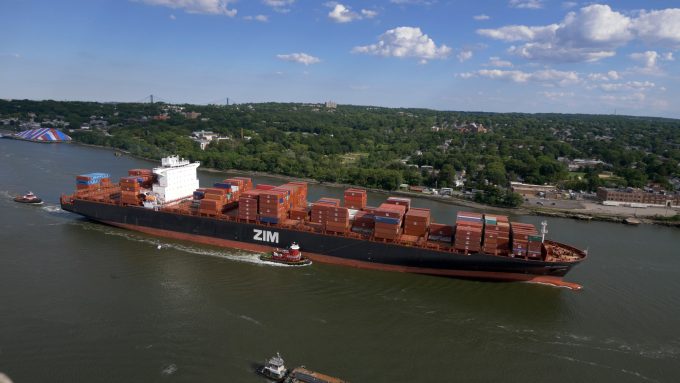It's a ‘crystal ball’ outlook for ocean carrier earnings this year
After two years of record profitability, liner industry ocean carriers are busy collating their earnings from what has been an extremely challenging first quarter.
The tailwind effect of unexpired higher contract rates is likely to see most lines achieve respectable results for Q1, but thereafter it may be a different story.
According to Blue Alpha Capital founder John McCown’s analysis of 2022 container shipping line earnings, the cumulative net profit for the carriers that report their results, and an estimate for those that do not, hit a new record of $215bn, following2021’s $148bn.
However, Mr McCown said, earnings in the final quarter of last year had fallen sharply, 34%, on the previous year, for a cumulative net income of $34.7bn.
Cosco (including OOCL) was the only carrier to show an improvement in its Q4 earnings on the previous year, recording a net profit of $4.9bn, while, in particular, Zim, saw its earnings slump from $1.7bn to $417m and Yang Ming saw its net profit in Q4 slump to $483m, from $1.9bn the year before.
Mr McCown expects the diminishing earnings trend to continue, although overall, the liner industry should remain in the black.
His current estimate is for net carrier income this year to achieve “a highly respectable” $43.2bn, from $14.9bn coming in Q1, $10.8bn in Q2 and $8.7bn in each of the third and fourth quarters.
“Obviously, actual first-quarter results will provide significant additional factual information on how the balance of the year will play out,” said Mr McCown.
Indeed, there is so much uncertainty on the global economic outlook, and resulting consumer demand, that the outlook from carriers is especially murky this year. For instance, Maersk’s operational profit of $31bn last year has been scaled back dramatically for 2023, to a modest $2bn to $5bn.
After Hapag-Lloyd’s $18.3bn ebit for 2022, its forecast for this year is between $2.1bn and $4.3bn.
The German carrier’s CEO, Rolf Habben Jansen, told investors and analysts last month that in terms of transported volumes “the year has not got off to a great start”, and that he expected freight rates to fall further.
And OOCL’s parent, OOIL, was also circumspect on the outlook as it announced its 2022 full-year results last week. It said that if inventories were reduced and the economic outlook improved, then there “could be an uptick” in the second half of the year.
“There can, however, be no certainty about that outcome, given the extent of perfectly valid concerns about the future impact of inflation, interest rate rises and broader economic geopolitical instability,” said OOIL.
Mr McCown acknowledged that, having arrived at this forecast for this year by “taking out my crystal ball and buffering it with all the current data before me”, as well as extending the current industry trend lines, he expects “to revise my estimate, perhaps materially, as the actual 2023 quarters unfold”.

